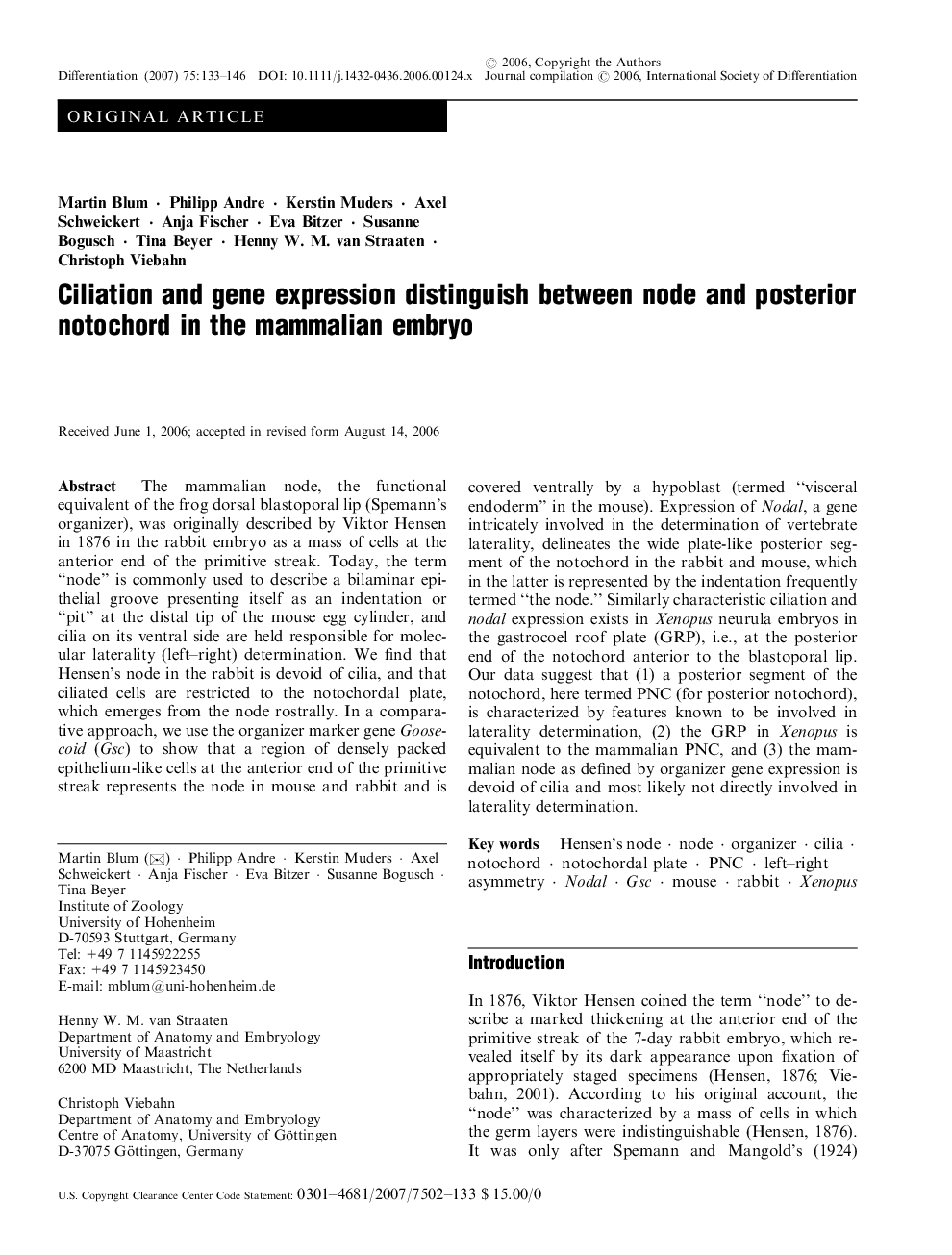| کد مقاله | کد نشریه | سال انتشار | مقاله انگلیسی | نسخه تمام متن |
|---|---|---|---|---|
| 2120163 | 1085447 | 2007 | 14 صفحه PDF | دانلود رایگان |

The mammalian node, the functional equivalent of the frog dorsal blastoporal lip (Spemann's organizer), was originally described by Viktor Hensen in 1876 in the rabbit embryo as a mass of cells at the anterior end of the primitive streak. Today, the term “node” is commonly used to describe a bilaminar epithelial groove presenting itself as an indentation or “pit” at the distal tip of the mouse egg cylinder, and cilia on its ventral side are held responsible for molecular laterality (left–right) determination. We find that Hensen's node in the rabbit is devoid of cilia, and that ciliated cells are restricted to the notochordal plate, which emerges from the node rostrally. In a comparative approach, we use the organizer marker gene Goosecoid (Gsc) to show that a region of densely packed epithelium-like cells at the anterior end of the primitive streak represents the node in mouse and rabbit and is covered ventrally by a hypoblast (termed “visceral endoderm” in the mouse). Expression of Nodal, a gene intricately involved in the determination of vertebrate laterality, delineates the wide plate-like posterior segment of the notochord in the rabbit and mouse, which in the latter is represented by the indentation frequently termed “the node.” Similarly characteristic ciliation and nodal expression exists in Xenopus neurula embryos in the gastrocoel roof plate (GRP), i.e., at the posterior end of the notochord anterior to the blastoporal lip. Our data suggest that (1) a posterior segment of the notochord, here termed PNC (for posterior notochord), is characterized by features known to be involved in laterality determination, (2) the GRP in Xenopus is equivalent to the mammalian PNC, and (3) the mammalian node as defined by organizer gene expression is devoid of cilia and most likely not directly involved in laterality determination.
Journal: Differentiation - Volume 75, Issue 2, February 2007, Pages 133–146